Atessa, Chieti, Abruzzo, Italy

Atessa is a rural town set in the hills of the Sangro river valley. It has many picturesque and delightful small alleyways which wind their way up to the top of the town, where there are marvellous views. It is best known for the cathedral of San Leucio and a church on the site is mentioned as far back as the 9th century. There are several hotels here, some decent shopping (though it is a small town) and good restaurants. There are also two surviving town gates – the Nuova Porta di San Nicola (1779) and the 14th century Porta di San Michele. The latter is flanked by two restored 14th century buildings and leads onto a lovely old road. There is also a delightful small theatre here that you can view within the local town hall. Atessa is midway between the mountains and sea (30 minutes drive to both). The commune population is around 10,600.There are legends that have their roots in the mists of time, combining folklore, history and religion, and whose protagonists are famous men and monstrous mythological figures: this is precisely the case of the town of Atessa. The city now in the province of Chieti, was originally divided into two villages  Ate and Tixa separated by a marshy valley that prevented any relationship and exchange among people, especially because in a cave in the middle of the valley lived a fearsome dragon. After sowing death and destruction for a long time in the two villages, the inhabitants decided to seek the intervention of the Bishop of Brindisi, Leucio, already known for defeating a dragon in his city. The man went alone in the lair of the monster, and with one glance, made it kneel down and bound it leaving so for seven days before killing it. The dragon’s blood was used by men as a healing potion and the remaining was used to make the marsh a rich and fertile valley. It was only then that the inhabitants of the two villages joined in today’s city of Atessa, erecting on the dragon’s lair a church in honor of Leucio, who was appointed Saint and Patron of the city. Today in the church is preserved the rib of an ancient mammalian length of 2 meters and many still believe is that of the dragon. Sometimes is just sufficient a little faith to make a legend reality.
Ate and Tixa separated by a marshy valley that prevented any relationship and exchange among people, especially because in a cave in the middle of the valley lived a fearsome dragon. After sowing death and destruction for a long time in the two villages, the inhabitants decided to seek the intervention of the Bishop of Brindisi, Leucio, already known for defeating a dragon in his city. The man went alone in the lair of the monster, and with one glance, made it kneel down and bound it leaving so for seven days before killing it. The dragon’s blood was used by men as a healing potion and the remaining was used to make the marsh a rich and fertile valley. It was only then that the inhabitants of the two villages joined in today’s city of Atessa, erecting on the dragon’s lair a church in honor of Leucio, who was appointed Saint and Patron of the city. Today in the church is preserved the rib of an ancient mammalian length of 2 meters and many still believe is that of the dragon. Sometimes is just sufficient a little faith to make a legend reality.
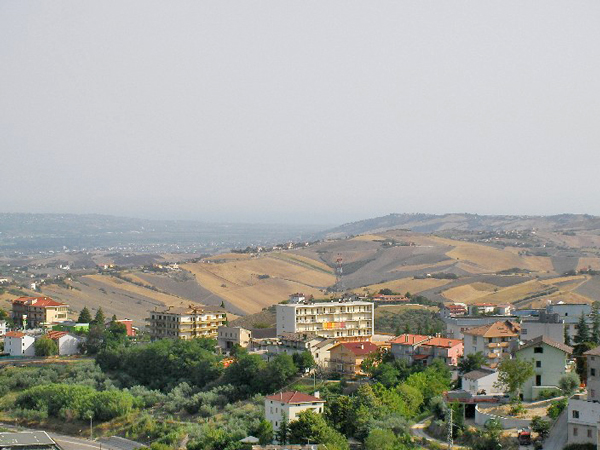

Bomba, Chieti, Abruzzo, Italy


Bomba is a comune and town in the Province of Chieti in the Abruzzo region of Italy. The first historical quote to the existence of the town is in parchment paper present in the Chieti Archbishop Administration. It dates back to 1115 and refers to taxes to be paid. In 1269 the town was donated by King Charles I of Naples to Ranulfo de Courtenay. In 1500, town inhabitants were about 600. While at the end of the 17th century they were only 300. At the beginning of the 19th century it was home town of Bertrando and Silvio Spaventa who were famous Italian patriots. In the middle of the 20th century a big dam was built over the Sangro River (close to the town) that generated a large artificial lake famous for tourism and for sportive activities.

Bucchianico, Chieti, Abruzzo, Italy
 Bucchianico is a comune and town in the Province of Chieti in the Abruzzo region of Italy
Bucchianico is a comune and town in the Province of Chieti in the Abruzzo region of Italy
The town is situated on a hill between the river valleys Alento and Bucchianico Forum, and has a view extending from the Maiella to ‘Adriatico. Its territory is hilly, mainly arable, but with a significant presence of olive groves and vineyards, is profoundly affected by characteristic forms of erosion, gullies. The climate is temperate hilly, with winter temperatures about 6 ° C and summer at about 23.5 ° C and relatively abundant rainfall, which are around 1000 mm and are mainly concentrated in late autumn.

Carpineto Sinello, Chieti, Abruzzo, Italy
Carpineto, also called Carpineto Sinello, is crowned by its castle and has some archaeological ruins. On the last weekend of July, Carpineto holds the Sagra della Porchetta, with tastings of porchetta and ventricina, music and dancing.
Casalanguida, Chieti, Abruzzo, Italy
 Casalanguida is a village (population 1079) situated near Gissi. It is a typical village of this area and is high up in the hills (altitude 450 metres). Travelling west through the village takes you on up into the mountains. It is a peaceful village, where the pace of life is leisurely and traditional. The patron saint is San Nicola and her Saints day is the 12th March. On the 19th March is San Guiseppe’s fair. Feast days are the 7th October- Madonna Dell Rosario and the 8th August Saint Donato’s day. The village has basic amenities. The commune was found in the middle ages and became the feuding ground of several noble families. The first documents date back to the 12th century. The town’s name derives from Late Latin languena meaning “borderland”, Casalanguida towers date back to the fifteenth century. The towers are several stone fragments, including, shelves, jambs, lintels, sills, redondoni and gargoyles. They are made of river pebbles. At Casalanguida find a pharmacy, a post office, a bakery and a butcher’s shop, bank, restaurants and schools. Casalanguida has a band been active for over a century.
Casalanguida is a village (population 1079) situated near Gissi. It is a typical village of this area and is high up in the hills (altitude 450 metres). Travelling west through the village takes you on up into the mountains. It is a peaceful village, where the pace of life is leisurely and traditional. The patron saint is San Nicola and her Saints day is the 12th March. On the 19th March is San Guiseppe’s fair. Feast days are the 7th October- Madonna Dell Rosario and the 8th August Saint Donato’s day. The village has basic amenities. The commune was found in the middle ages and became the feuding ground of several noble families. The first documents date back to the 12th century. The town’s name derives from Late Latin languena meaning “borderland”, Casalanguida towers date back to the fifteenth century. The towers are several stone fragments, including, shelves, jambs, lintels, sills, redondoni and gargoyles. They are made of river pebbles. At Casalanguida find a pharmacy, a post office, a bakery and a butcher’s shop, bank, restaurants and schools. Casalanguida has a band been active for over a century.
Casalbordino, Chieti, Abruzzo, Italy
 Between the Sinello and Osento rivers, the ancient medieval borough of Casalbordino lies surrounded by olive trees, vineyards and orchards. Casalbordino as a town has plenty of amenities and an attractive setting. Not far out of the town is a famous shrine, the Santuario della Madonna dei Miracoli, an important religious destination for pilgrims from all over the Christian world. As well as the town, 4 km away there is Casalbordino Lido (which is the beach). This is a small resort, where there are a few hotels and some modern apartments, but everything is generally low-key and relaxed. The beaches are both sandy and shingle, the sea turquoise and there are several restaurants and bars along the sea front. The beach is also adjacent to a nature reserve which is extremely attractive and protects 7 km of natural coastline.
Between the Sinello and Osento rivers, the ancient medieval borough of Casalbordino lies surrounded by olive trees, vineyards and orchards. Casalbordino as a town has plenty of amenities and an attractive setting. Not far out of the town is a famous shrine, the Santuario della Madonna dei Miracoli, an important religious destination for pilgrims from all over the Christian world. As well as the town, 4 km away there is Casalbordino Lido (which is the beach). This is a small resort, where there are a few hotels and some modern apartments, but everything is generally low-key and relaxed. The beaches are both sandy and shingle, the sea turquoise and there are several restaurants and bars along the sea front. The beach is also adjacent to a nature reserve which is extremely attractive and protects 7 km of natural coastline.
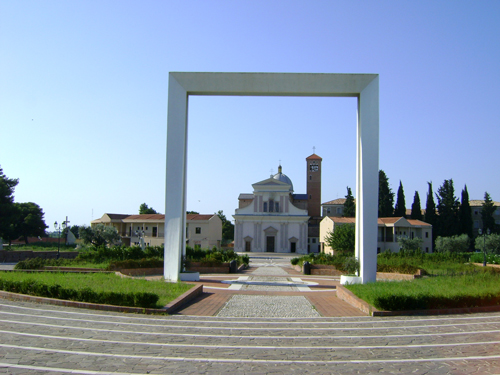
Casoli, Chieti, Abruzzo, Italy

Casoli is situated on the edge of the Majella National Park. This is a charming mediaeval town (population of commune around 6000) with lovely old streets. At the highest point of the town is the Casoli Castle, a watchtower that is part of an old church. From here you can get wonderful views across to the Majella mountain range. Casoli has good amenities/shops. Casoli is about a 30 minute drive to the coast. The patron saint of Casoli is Saint Reparata and Saints day is the 8th October.


Dogliola, Chieti, Abruzzo, Italy
 Dogliola is a nice little town not far from Vasto (15 km), well known tourist resort. The town has a pharmacy, nursery school, post office, grocery store. The day of San Rocco is celebrated on the day of the grain, a joyous celebration especially for children wearing traditional costumes of Abruzzo. In the typical gastronomy mentioned ventricina and salami.
Dogliola is a nice little town not far from Vasto (15 km), well known tourist resort. The town has a pharmacy, nursery school, post office, grocery store. The day of San Rocco is celebrated on the day of the grain, a joyous celebration especially for children wearing traditional costumes of Abruzzo. In the typical gastronomy mentioned ventricina and salami.

Fraine, Chieti, Abruzzo, Italy

Fraine is a small historic village midway between the mountains and the sea (30 km to both) with a population of 463. It is about a 30 minute drive to Vasto and is surrounded by wonderful countryside with views to the mountains.
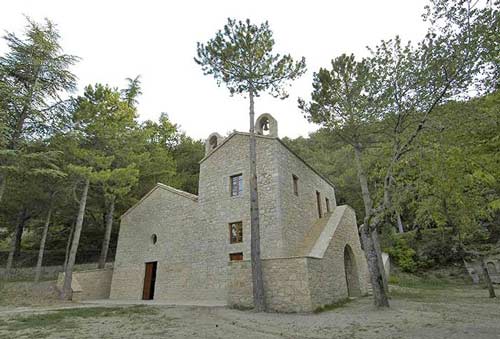
Fresagrandinaria, Chieti, Abruzzo, Italy
 The territory of Fresagrandinaria is bounded by the Trigno river . There are a medical clinic, a nursery school, elementary and middle school, as well as a police station since 1896. The hospital is in Vasto (26 km) which is connected with services autobus. In center there is an artistic fountain with three spouts built in 1891 topped by a metal statue of a water nymph, Galatea. From the hills, enjoying sweeping views of the Maiella, the mountain of Monte Mauro Roccaspinalveti the mouth of the river on the Adriatic Sea to Tremiti islands at low Molise to the Gargano. From Coccetta, when the sky is clear you can even see Chieti and the Gran Sasso. Christmas is characterized by a novena, from cribs in homes and in the church, from the dinner of nine different things. Are consumed roast eel, cod stew, fish soup, the fedelini tuna, vegetables, chestnuts, oranges, or scrippelle calcionetti (now the cake and nougat and especially grapes held benaugurate). It play bingo and then you go to midnight mass to kiss the Child while the choir sings the beautiful Christmas carol music by our Cross: in the silence of night.
The territory of Fresagrandinaria is bounded by the Trigno river . There are a medical clinic, a nursery school, elementary and middle school, as well as a police station since 1896. The hospital is in Vasto (26 km) which is connected with services autobus. In center there is an artistic fountain with three spouts built in 1891 topped by a metal statue of a water nymph, Galatea. From the hills, enjoying sweeping views of the Maiella, the mountain of Monte Mauro Roccaspinalveti the mouth of the river on the Adriatic Sea to Tremiti islands at low Molise to the Gargano. From Coccetta, when the sky is clear you can even see Chieti and the Gran Sasso. Christmas is characterized by a novena, from cribs in homes and in the church, from the dinner of nine different things. Are consumed roast eel, cod stew, fish soup, the fedelini tuna, vegetables, chestnuts, oranges, or scrippelle calcionetti (now the cake and nougat and especially grapes held benaugurate). It play bingo and then you go to midnight mass to kiss the Child while the choir sings the beautiful Christmas carol music by our Cross: in the silence of night.

Gissi, Chieti, Abruzzo, Italy
 Gissi has been inhabited since Prehistoric times. In the 12th century it fell under the influence of the D’Avalos family.
Gissi has been inhabited since Prehistoric times. In the 12th century it fell under the influence of the D’Avalos family.
The Palazzo Carunchio and the ruins of the Castle are fine examples of the town’s buildings. Built in the 19th century, the Palazzo Carunchio now serves as the Town Hall, and houses the town’s administrative offices. The town has other fine examples of palazzi from the 18th-19th centuries, adorned with fine architectural details.
The Church of Santa Maria Assunta is Gissi’s oldest church. Another church is the Cappella di Santa Lucia located in La Pineta, a pine tree park which affords wonderful views of the surrounding countryside, including the Adriatic Sea. Gissi is home to a variety of feasts and festivals, many of which are religious feasts in celebration of saints. These include the 20th May feast of St Bernardino of Siena. Other feasts include the Feast of St Lucy on August 20 and the Feast of St. Roch on August 19. Gissi has many amenities, restaurants and shops and is about a 30 minute drive to Vasto and the sea. Its population is about 3000.
Guilmi, Chieti, Abruzzo, Italy
Guilmi is a comune and town in the Province of Chieti in the Abruzzo region of Italy.
It is located on a hill Colle San Giovanni nearby the Sinello valley, from which the skyline of the village clearly sticks out with the profile of the water cisterne and the church of Santa Maria Immacolata.
According to legend the village, then called Tripaldi, lay on both banks of the Sinello river, until it was destroyed around 1720 by an invasion of termites.
The patron of Guilmi is Saint Nicholas of Bari, celebrated on May 4rth and 5th with a procession in traditional costumes where the women carry on their heads the “conca”, that is a brass vase filled with traditional foods and sweets, which is sold in order to make offering to the church. Other feasts: St. Mary Magdalen on July 21. Sagra della “ventricina” on August 14. The “ventricina” is a typical salami from Guilmi made with pork meat and spicies.
Palmoli, Chieti, Abruzzo, Italy

In Palmoli there is a pharmacy, nursery school, post office, grocery store. Nearby towns, you can still find everything you need. Palmoli is full of interesting and characteristic.
Most striking are certainly are those hidden: the narrow lanes, stone arches that surround the old wooden doors. The Pacchianella is the most important event of the year. It takes place on 27 July and consists in the parade of floats, animals and people in costume, which, with the preparations as much as possible reminiscent of the peasant culture of the past, offer a gift to Virgin Mary of the typical products of the fields. Typical dishes are many, as scrambled eggs in the Abruzzo way, baked bread and many other specialties.

Pescara, Pescara, Abruzzo, Italy
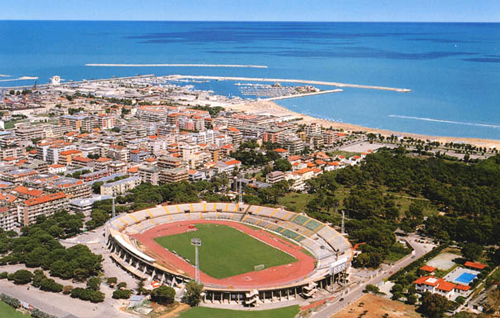
Pescara, on the Adriatic coast, is the largest city in the Abruzzo region. Although it was badly bombed during the war, it’s now a good example of a modern Italian city and still retains some historic elements. Pescara has a nice seaside promenade, 20 km of sandy beach, great seafood restaurants, and lots of nightlife. The Museum of the Abruzzi People has a huge collection of artifacts about life in the Abruzzo from prehistoric times through the 19th century. Pescara has a few other museums and several good churches and buildings, too. In July, Pescara holds an international jazz festival.
San Buono, Chieti, Abruzzo, Italy
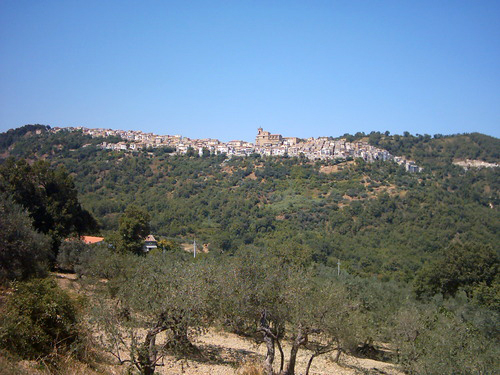 With a population of 1020 inhabitants and at 470 metres above sea level San Buono (near Gissi) is nestled in the hills in a panoramic location. This is a traditional town which in the past was called Castrum Sancti Boni or Bonum, then Sancto Bono before adopting its current name. The castrum originates from the tenth century. The town was originally a fiefdom of the Sangro and, subsequently, the Caracciolo. In the locality of Fonte di San Nico the ruins of an Italic sanctuary have been found and another sanctuary also found nearby. This town has basic amenities and a welcoming atmosphere with a feast day in August. It lies about 30km west of Vasto, about a 30 minute drive from Vasto town and also the beach.
With a population of 1020 inhabitants and at 470 metres above sea level San Buono (near Gissi) is nestled in the hills in a panoramic location. This is a traditional town which in the past was called Castrum Sancti Boni or Bonum, then Sancto Bono before adopting its current name. The castrum originates from the tenth century. The town was originally a fiefdom of the Sangro and, subsequently, the Caracciolo. In the locality of Fonte di San Nico the ruins of an Italic sanctuary have been found and another sanctuary also found nearby. This town has basic amenities and a welcoming atmosphere with a feast day in August. It lies about 30km west of Vasto, about a 30 minute drive from Vasto town and also the beach.
Sant’ Eusanio del Sangro, Chieti, Abruzzo, Italy
 In the village centre of Sant’ Eusanio del Sangro there are two supermarkets, two cafe’s, a bank with cash machine, a bakery and paper shop and there is a market selling fresh produce every Tuesday morning. The area has two restaurants, and two Pizzaria’s. In the area there are lots of places of interest – Pennapiedemonte has a beautiful gorge walk with magnificent views. There is Oasi di Serranella WWF nature reserve, which the river Sangro flows through and also the Grotto di Cavallone. Nearby Lanciano is great for shopping and is also home to the church of the Eucharistic Miracle which allegedly contains a drop of the blood of Christ. There are many lakes in the area,two of which are Lake Bomba and Lake Casoli. The commune population is around 2,500. The village is about 30 minutes drive to the beach and about 15 mins from Lanciano.
In the village centre of Sant’ Eusanio del Sangro there are two supermarkets, two cafe’s, a bank with cash machine, a bakery and paper shop and there is a market selling fresh produce every Tuesday morning. The area has two restaurants, and two Pizzaria’s. In the area there are lots of places of interest – Pennapiedemonte has a beautiful gorge walk with magnificent views. There is Oasi di Serranella WWF nature reserve, which the river Sangro flows through and also the Grotto di Cavallone. Nearby Lanciano is great for shopping and is also home to the church of the Eucharistic Miracle which allegedly contains a drop of the blood of Christ. There are many lakes in the area,two of which are Lake Bomba and Lake Casoli. The commune population is around 2,500. The village is about 30 minutes drive to the beach and about 15 mins from Lanciano.
Scerni, Chieti, Abruzzo, Italy
 About a 25 minute drive west from Vasto takes you up into the vine-covered hills that surround Scerni. The scenery here is rolling and picturesque and the roads quiet. Scerni is a rural town, population just under 4000, with many shops, small supermarkets, a doctors surgery, post office, library, banks, pharmacies, restaurants etc.. It is an attractive, lively town, spread out mainly along the main roads that run in and out of the town. Scerni has prehistoric origins and was inhabited in ancient Roman times. The current town was established in the middle ages, where the place was a stopping off point on the route for shepherds who practised transhumance and moved their herds down from the mountains to lower pastures in Apulia come the onset of autumn. The church of San Panfilo in Scerni is built on a site which was originally dedicated to the Pagan God Ceres. The town boasts a Castle and has an historic centre. The patron saint of Scerni is San Panfilo and the Saints day is 28th April. Scerni is a 15 minute drive to Casalbordino Lido.
About a 25 minute drive west from Vasto takes you up into the vine-covered hills that surround Scerni. The scenery here is rolling and picturesque and the roads quiet. Scerni is a rural town, population just under 4000, with many shops, small supermarkets, a doctors surgery, post office, library, banks, pharmacies, restaurants etc.. It is an attractive, lively town, spread out mainly along the main roads that run in and out of the town. Scerni has prehistoric origins and was inhabited in ancient Roman times. The current town was established in the middle ages, where the place was a stopping off point on the route for shepherds who practised transhumance and moved their herds down from the mountains to lower pastures in Apulia come the onset of autumn. The church of San Panfilo in Scerni is built on a site which was originally dedicated to the Pagan God Ceres. The town boasts a Castle and has an historic centre. The patron saint of Scerni is San Panfilo and the Saints day is 28th April. Scerni is a 15 minute drive to Casalbordino Lido.
Villalfonsina, Chieti, Abruzzo, Italy
 Villalfonsina is a commune and town in the province of Chieti close to Casalordino. The town has a population of 1008.
Villalfonsina is a commune and town in the province of Chieti close to Casalordino. The town has a population of 1008.
The town is located on the right bank of the Osento River and the inhabitants are called ‘villesi’. The countryside here is full of orchards, olive trees and vineyards. In the vicinity there are traces of Roman settlements and monasteries in the hinterland suggest that there have long been human settlements in the area. The present name derives from feudal Lord Alfonso D’Avalos, who founded the place and made it a lively agricultural centre. According to one tradition, he populated the area with colonists from Slavonia (Sclavonia) and the belltower of the central church, Madonna della Neve, still bears clear traces of Slavic architecture. The town lies about 10 mins drive from the sea.




